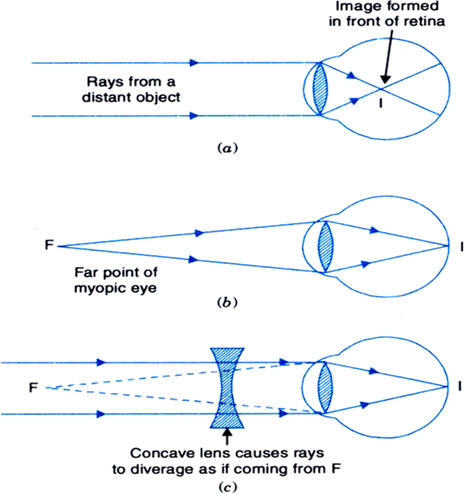A student is unable to see clearly the words written on the blackboard placed at a distance of approximately 4 m from him. Name the defect of vision the boy is suffering from. Explain the method of correcting this defect Draw ray diagram for the:
i. defect of vision and also
ii. for its correction.
The boy is suffering from myopia. Myopia or near-sightedness or short-sightedness is a defect in which a person is unable to see far away things clearly. In this defect, a person can see objects placed at a certain distance ( far point) from the eye only but everything beyond that distance appears blurry. The maximum distance up to which a person can see things clearly that is the image is formed on the retina is called the far point.
Actually what happens in myopia is the rays coming from the object, after refraction from the lens, converges to a point before the retina as the retina is the screen where the image should be obtained. In other words, the focal length of the eye lens decreases. So the rays are focused before retina and the image is not obtained clearly leading to a blurry image. Now the main objective is to focus the light on the retina. So a double-concave lens is used in front of the eye to fulfill this purpose. A double concave lens spread the light coming from the far away placed object that makes the light rays parallel so that the rays converge at the retina and thus forming a clear image. In other words, the concave lens brings the image of the object, placed beyond the far point, in between the far point & the least distance of distinct vision. Now this image acts an object for convex lens and image is formed on the retina. The focal length, f of the lens should be equal to the negative of distance of a far point , D.
f = -D
